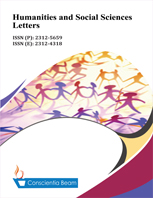Wastage of School Material Resources and Secondary School System Effectiveness: Evidence from a Survey in Nigeria
DOI:
https://doi.org/10.18488/journal.73.2020.83.264.279Abstract
This study was undertaken to assess the causal effects of the wastage of school material resources and school system effectiveness in secondary schools in Cross River State of Nigeria. A survey was conducted using a sample of 1,480 respondents (271 principals, 396 vice principals, and 813 teachers. Data were collected through two instruments Wastage of School Material Resources Questionnaire (WSMRQ) designed by the researchers, validated by three experts, and with Cronbach alpha reliability of .895; School System Effectiveness Scale (SSES) designed and validated psychometrically by Bassey, Owan, and Eze (2019) with Cronbach reliability values of .982, .983, and .930 for the three sub-scales, and a reliability coefficient of .941 for the overall instrument. Descriptive statistics and structural equation modelling were employed in analysing collected data. Findings of the study revealed that school material resources are wasted in different and numerous ways. Some of these ways are significant while others are not. Teaching equipment that are wasted in schools include manuals, desks, workbooks, charts, projectors, playgrounds, drawing books, chalks, textbooks, laboratories, chalkboard/whiteboards, markers, handbooks, and computers. It was discovered also that wastage of school farm resources, buildings, and teaching equipment have a direct significant but negative effect on the effectiveness of schools, accounting for 17% of the total variance in the effectiveness of the school. It was concluded, that increment in the wastage of school material resources will cause the effectiveness of schools to decline. The implication of the finding of this study is discussed for global best practices.

